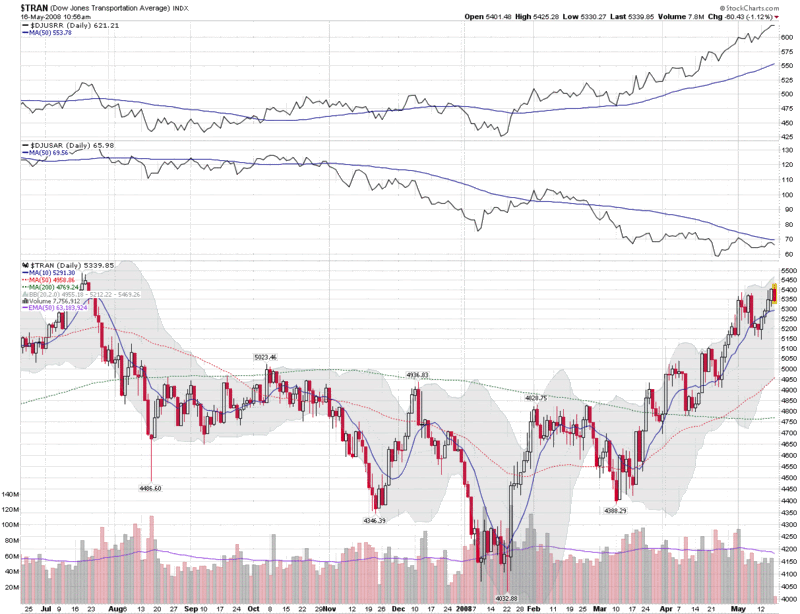The Shift from Roads to Rails
The Dow Jones Transportation Average (DJTA) has a long and storied history, but has been frequently overlooked in recent years. Despite this secondary billing, the index is up over 30% since bottoming in January and is close to challenging last summer’s all-time high.
The transports are often thought of as a barometer of the cyclical economy, frequently rising as an economy transitions from recession to recovery. As such, the rise in this index has been noted by many observers as a sign of better economic times ahead.
The reality is that the transportation index aggregates several related industries, including commercial airlines, shipping companies, railroads, truckers, and air freight firms. These firms have had widely varying fortunes lately and the outlook is different from segment to segment. One important distinction between these companies is their exposure to rising fuel costs. Not surprisingly, airlines and truckers have been hit hard by rising energy prices. Shippers and railroads, however, have suffered less of an impact. The distinction is dramatic when drawn between railroads and airlines. In the chart below, I have included not only the DJTA, but the Dow Jones US Railroad Index ($DJUSRR) and the Dow Jones US Airlines Index ($DJUSAR). The chart shows what most of us already know: the rails are booming and the airlines are struggling.
Energy costs are tilting the balance of power away from airlines and truckers back toward the traditional bulk carriers: railroads and shipping companies. In an era of rapidly expanding global trade, not only will the winners be the ones with a significant cost advantage, but their growing market share and growing markets should make for some enticing investment opportunities.



1 comments:
The problem with the rails is transparency. A very large portion of their revenues and profits are derived from fuel surcharges. SHIPPING VOLUMES ARE DOWN!!!! The rails do not provide a breakdown of the impact of fuel surcharges on their numbers in their SEC filings.
If west texas intermediate (basis of surcharges) oil tanks what happens to revenues and profits? There are also a boatload of lawsuits pending on the surcharges and Congress held hearings on the subject in March.
Volumes Down - Fuel Surcharges Up -Lawsuits - Regulation = RISK
Post a Comment